17th Century William and Mary Rosewood Coffre Fort on Stand, Secret Compartments
Sold
Request Information
Follow Us
17th Century William and Mary Rosewood Coffre Fort on Stand, Secret Compartments
The unique 17th-century William and Mary rosewood coffre forte, circa 1690, raised on George I walnut stand, circa 1720.
The rosewood veneered exterior is entirely decorated in gilt brass straps. Once the lid is opened you can open the gilt brass catch to release the cover revealing a void. You can slide out the left and right verticle pieces which reveal oak boxes on each side and you will note a small brass knob to the centre. I was baffled at first as to what this knob was for but it is a key to release the secret drawer in the lower section. You insert it into a small hole and this releases the spring allowing you to slide the drawer divide out.
Once this and the drawers are removed, you can slide the entire base of the box out which hides a tray and two large drawers to either side. It is all very well thought out and the cabinetmaker has created an optical illusion. Looking at the box you would have said that there is no way that the large secret drawers and tray could fit in the lower section below the two drawers but the drop-down front is positioned at the top of the base which makes it appear 1 inch but it is greater than 2 inches!
The walnut cabriole leg stand dates from the reign of King George I, circa 1720 and it is likely that it was a bespoke commission to elegantly raise the coffre forte in the period. It should be noted that this is an extremely rare addition.
When placed on the stand the total height is 88 cm.
Condition
Good. Wear consistent with age and use. Lovely original condition with well-patinated surfaces
Dimensions
Height: 34.65 in. (88 cm)
Width: 15.16 in. (38.5 cm)
Depth: 9.06 in. (23 cm)
PREVIOUSLY SOLD
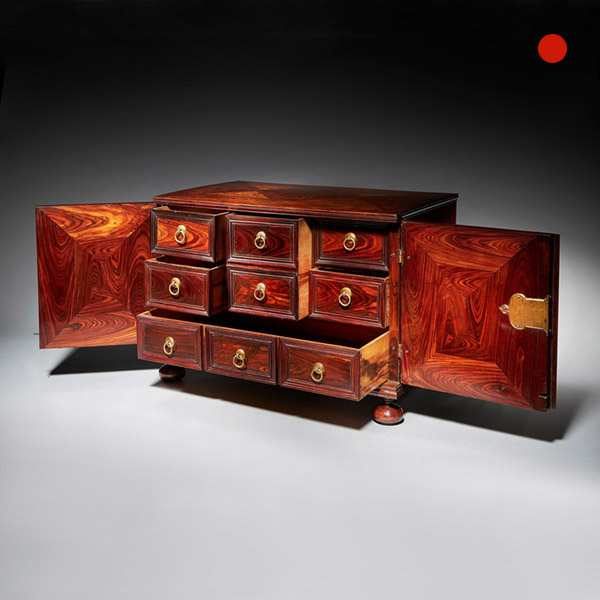
Extremely Rare and Fine Miniature Kingwood Table Cabinet from the Reign of Charles II
Extremely Rare and Fine Miniature Kingwood Table Cabinet from the Reign of Charles SOLD Follow UsExtremely Rare and Fine Miniature Kingwood Table Cabinet from the Reign of Charles Extremely rare and fine miniature kingwood table cabinet from...
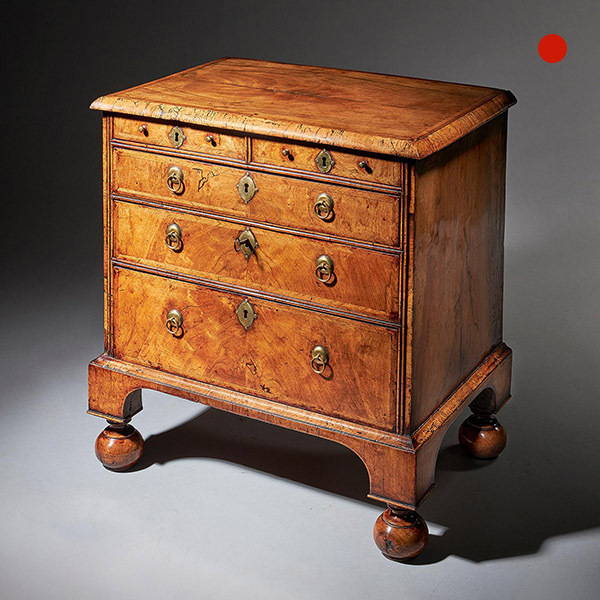
An extremely rare George I walnut chest of small proportions on ball and bracket
An extremely rare George I walnut chest of small proportions on ball and bracket SOLD Follow UsAn extremely rare George I walnut chest of small proportions on ball and bracket The cross-grain moulded and feather banded book-matched top sits...

Fine and Rare Late 17th Century William and Mary Olive Oyster Lace Box
Fine and Rare Late 17th Century William and Mary Olive Oyster Lace Box Sold Follow UsFine and Rare Late 17th Century William and Mary Olive Oyster Lace Box A fine and rare late 17th century olive oyster 'lace box from the reign of King...

Late 17th Century Charles II Carved Oak Bible Box, Deed Box, Blanket Box,or Candle Box
Late 17th Century Charles II Carved Oak Bible Bo, Deed, Blanket, or Candle Box Sold Follow UsLate 17th Century Charles II Carved Oak Bible, Deed, Blanket, or Candle Box A superb and original late 17th century oak box with excellent and deep...
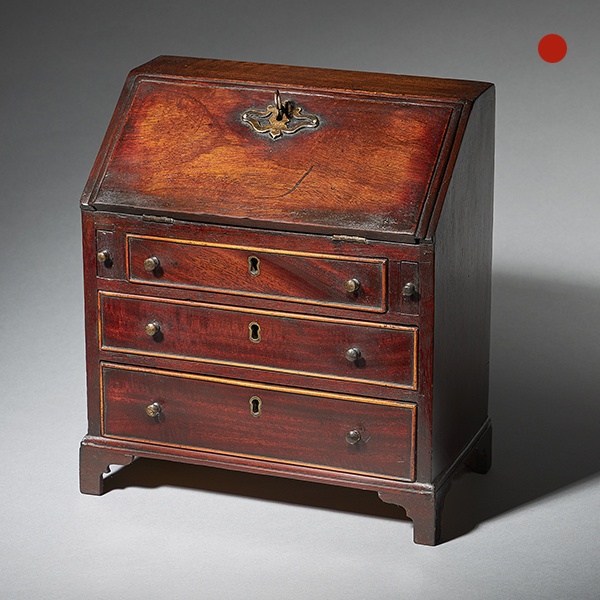
18th Century George II Mahogany Miniature Bureau
18th Century George II Mahogany Miniature Bureau SOLD Follow Us18th Century George II Mahogany Miniature Bureau What came first.... the miniature or the full scale? This small scale model at just 9” wide dates from the very beginning of the...
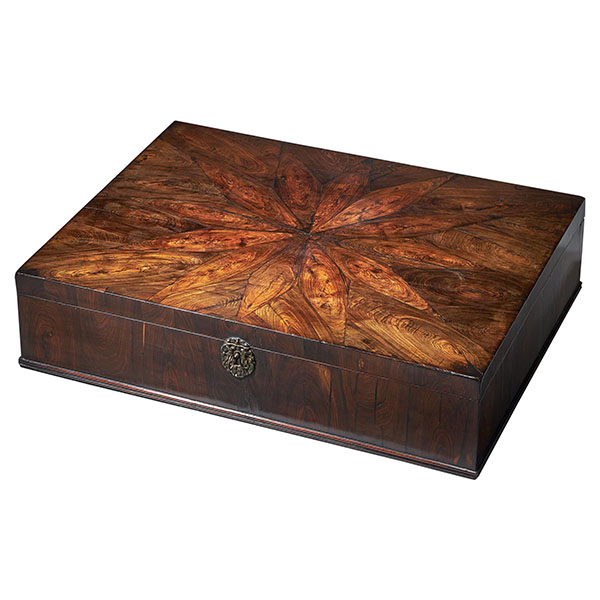
17th Century Charles II Cocuswood Lace Box, Circa 1660, England
17th Century Charles II Cocuswood Lace Box, Circa 1660, England SoldFollow Us17th Century Charles II Cocuswood Lace Box, Circa 1660, England An extremely rare and important Cocuswood oyster (Brya ebenus) lace box from the reign of Charles II,...

Extremely Rare and Fine Miniature Kingwood Table Cabinet from the Reign of Charles II
Extremely Rare and Fine Miniature Kingwood Table Cabinet from the Reign of Charles SOLD Follow UsExtremely Rare and Fine Miniature Kingwood Table Cabinet from the Reign of Charles Extremely rare and fine miniature kingwood table cabinet from...

An extremely rare George I walnut chest of small proportions on ball and bracket
An extremely rare George I walnut chest of small proportions on ball and bracket SOLD Follow UsAn extremely rare George I walnut chest of small proportions on ball and bracket The cross-grain moulded and feather banded book-matched top sits...

Fine and Rare Late 17th Century William and Mary Olive Oyster Lace Box
Fine and Rare Late 17th Century William and Mary Olive Oyster Lace Box Sold Follow UsFine and Rare Late 17th Century William and Mary Olive Oyster Lace Box A fine and rare late 17th century olive oyster 'lace box from the reign of King...

Late 17th Century Charles II Carved Oak Bible Box, Deed Box, Blanket Box,or Candle Box
Late 17th Century Charles II Carved Oak Bible Bo, Deed, Blanket, or Candle Box Sold Follow UsLate 17th Century Charles II Carved Oak Bible, Deed, Blanket, or Candle Box A superb and original late 17th century oak box with excellent and deep...

18th Century George II Mahogany Miniature Bureau
18th Century George II Mahogany Miniature Bureau SOLD Follow Us18th Century George II Mahogany Miniature Bureau What came first.... the miniature or the full scale? This small scale model at just 9” wide dates from the very beginning of the...

17th Century Charles II Cocuswood Lace Box, Circa 1660, England
17th Century Charles II Cocuswood Lace Box, Circa 1660, England SoldFollow Us17th Century Charles II Cocuswood Lace Box, Circa 1660, England An extremely rare and important Cocuswood oyster (Brya ebenus) lace box from the reign of Charles II,...
YOU MAY ALSO LIKE
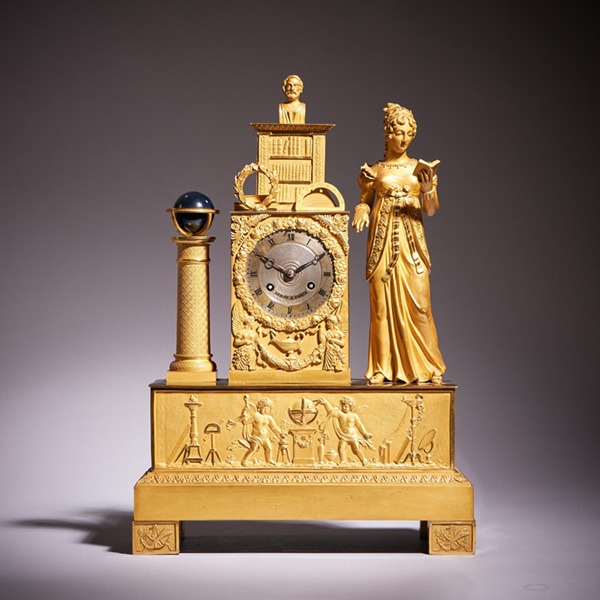
Fine 19th-century French ormolu mantel clock (pendule) by Leroy a Paris, c. 1825
Fine 19th century French ormolu mantel clock (pendule) by Leroy a Paris, c. 1825 £7,495Follow...
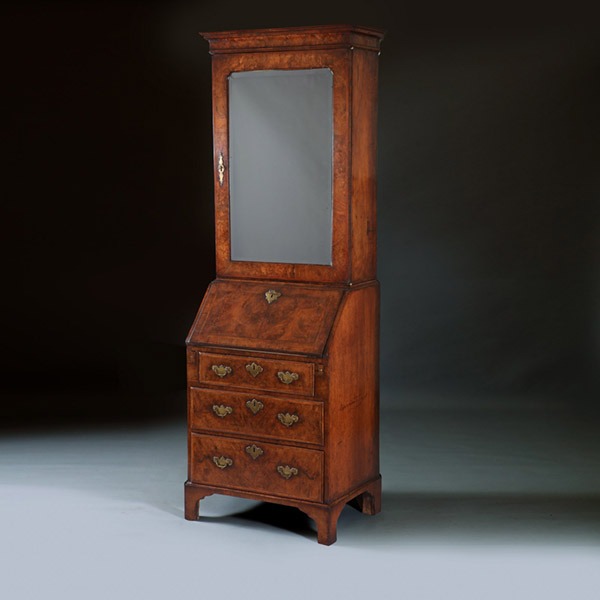
A Fine Early 18th Century George I Burr Walnut Bureau Bookcase, Circa 1715
A Fine Early 18th Century George I Burr Walnut Bureau Bookcase, Circa 1715 £11,500Follow UsA Fine...
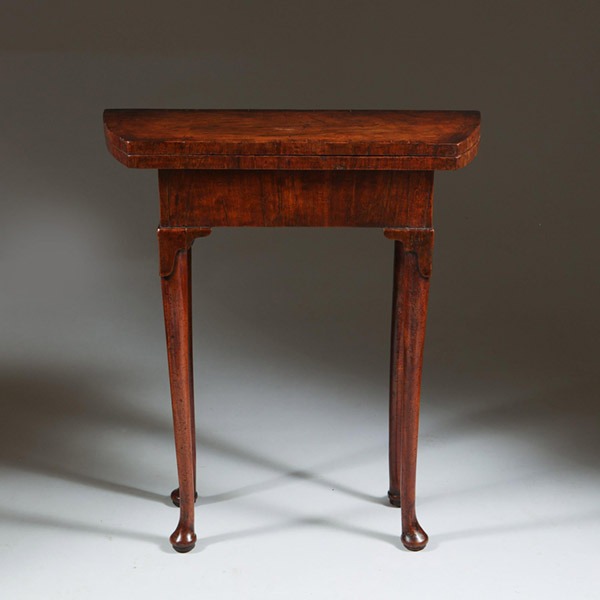
A Unique Early 18th Century Diminutive George I Figured Walnut Bachelors Table
A Unique Early 18th Century Diminutive George I Figured Walnut Bachelors Table £12,800Follow UsA...
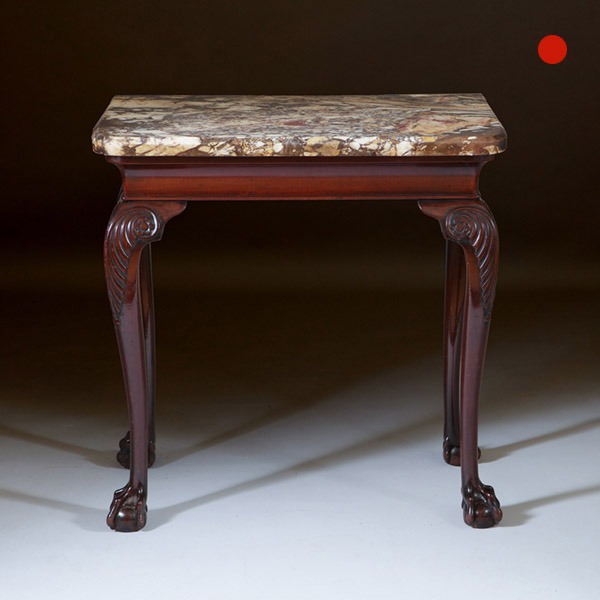
A Fine 18th Century George II Mahogany Marble Topped Console Table, Ireland
A Fine 18th Century George II Mahogany Marble Topped Console Table, Ireland SoldFollow UsA Fine...
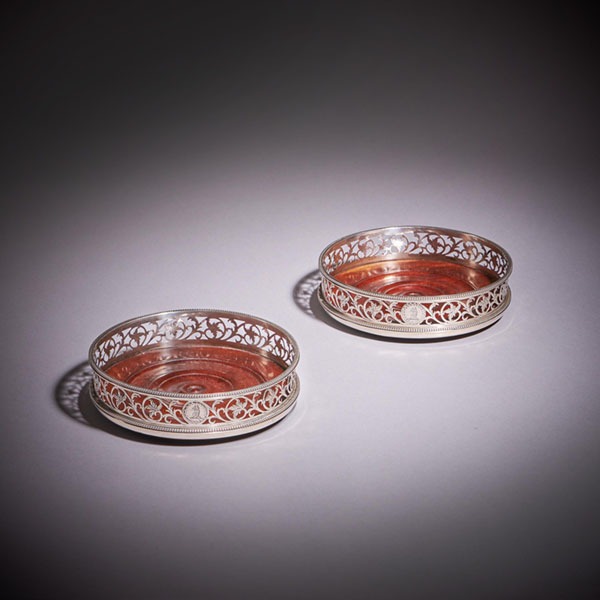
A Fine Pair of 18th Century George III Silver Engraved Open Fret Wine Coasters
A Fine Pair of 18th Century George III Silver Engraved Open Fret Wine Coasters £3,600Follow UsA...
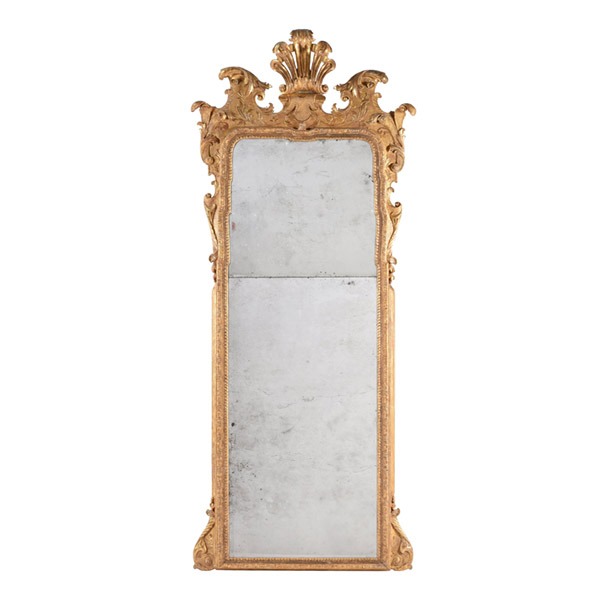
A Large 18th Century George I Gilt-Gesso Pier Glass, Attributed to John Belchier
A Large 18th Century George I Gilt-Gesso Pier Glass, Attributed to John Belchier £42,000Follow UsA...

Fine 19th-century French ormolu mantel clock (pendule) by Leroy a Paris, c. 1825
Fine 19th century French ormolu mantel clock (pendule) by Leroy a Paris, c. 1825 £7,495Follow...

A Fine Early 18th Century George I Burr Walnut Bureau Bookcase, Circa 1715
A Fine Early 18th Century George I Burr Walnut Bureau Bookcase, Circa 1715 £11,500Follow UsA Fine...

A Unique Early 18th Century Diminutive George I Figured Walnut Bachelors Table
A Unique Early 18th Century Diminutive George I Figured Walnut Bachelors Table £12,800Follow UsA...

A Fine 18th Century George II Mahogany Marble Topped Console Table, Ireland
A Fine 18th Century George II Mahogany Marble Topped Console Table, Ireland SoldFollow UsA Fine...

A Fine Pair of 18th Century George III Silver Engraved Open Fret Wine Coasters
A Fine Pair of 18th Century George III Silver Engraved Open Fret Wine Coasters £3,600Follow UsA...

A Large 18th Century George I Gilt-Gesso Pier Glass, Attributed to John Belchier
A Large 18th Century George I Gilt-Gesso Pier Glass, Attributed to John Belchier £42,000Follow UsA...













